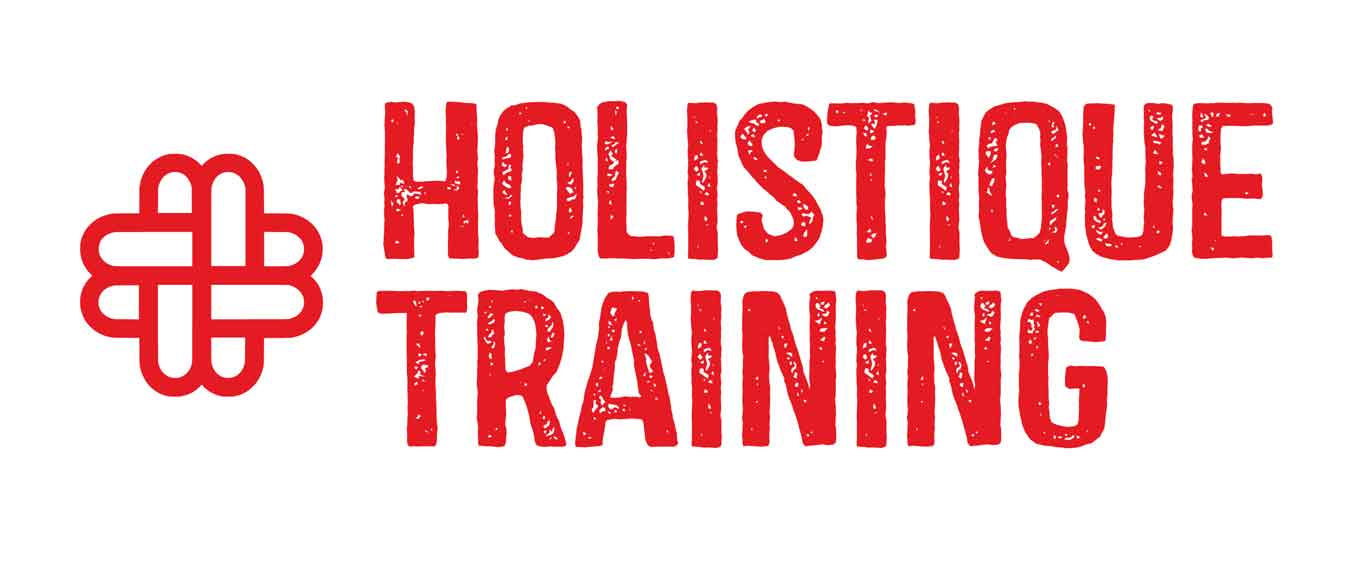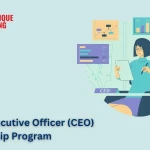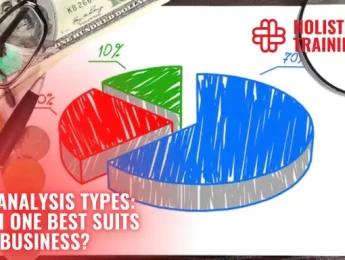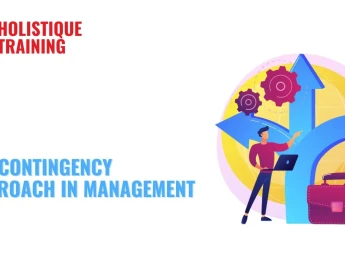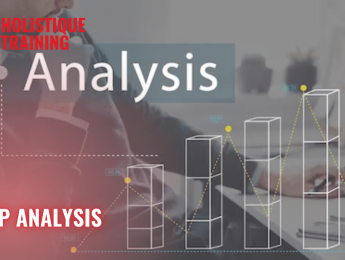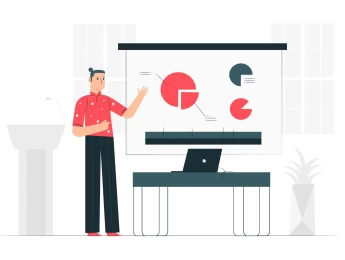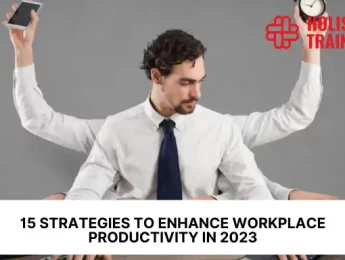- Table of Contents
- Introduction
- Tip 1: Define the EA Role with Extreme Clarity
- Different Administrative Support Roles — And Why Definitions Matter
- Clarify Responsibilities with Precision
- Outline Measurable KPIs
- Example: Poor vs. Excellent Job Descriptions
- Tip 2: Look Beyond the CV — Assess Behavioural & Cognitive Skills
- Essential Soft Skills to Prioritise
- Behavioural Assessment Tools
- How to Assess Multitasking Without Penalising Accuracy
- Sample Behavioural Interview Questions
- Research Insight: Emotional Intelligence & EA Performance
- Tip 3: Check Real-World Work Samples & Task Simulations
- Why Simulations Matter
- Recommended EA Simulation Tasks
- What to Look For in Simulation Results
- Full Example Exercise: 30-Minute EA Task Simulation
- Tip 4: Evaluate Their Systems, Tools & Tech Stack Knowledge
- Key Tools to Assess Competency With:
- Why Automation Knowledge Matters
- Short Technology Skills Checklist
- Case Example: The Value of Automation
- Tip 5: Assess Their Strategic Thinking & Anticipation Skills
- What Makes a High-Level EA?
- Examples of Anticipation in Action
- How to Test Anticipation Skills in Interviews
- Research Insight
- Tip 6: Cultural Fit, Work Style Compatibility & Communication Alignment
- Critical Workstyle Considerations
- Compatibility Evaluation Tools
- Real-World Compatibility Examples
- How to Test Communication Alignment
- Setting Expectations Early
- Tip 7: Offer a Competitive Package & a Clear Growth Path
- Why EAs Leave
- Salary Ranges for Executive Assistants (2025)
- Benefits Beyond Salary
- Structured Growth Path Examples
- Trial Months and Onboarding
- Conclusion
Introduction
Hiring an Executive Assistant (EA) in 2025 is no longer a routine administrative decision—it is a strategic investment that directly shapes executive effectiveness, organisational clarity, and long-term business success. Over the past decade, the EA role has evolved from administrative support into what many now describe as a business enabler or even a second brain to CEOs, founders, and senior leaders. In fast-moving work environments, where leaders juggle intense schedules, multinational responsibilities, and hybrid teams, the presence of a highly capable EA has become an essential pillar of high performance.
The modern EA is expected to support decision-making, coordinate operations, ensure information accuracy, anticipate organisational needs, and maintain a seamless workflow across departments. With hybrid work models and distributed teams dominating the organisational landscape, the EA now manages digital systems, remote coordination tools, and AI-assisted workflows, blending human judgement with technology to ensure consistency and alignment.
A poor EA hire can cost far more than lost time. It leads to disrupted decision cycles, weak internal systems, increased operational chaos, and heightened executive burnout. Research from the University of California indicates that constant task-switching can reduce executive productivity by nearly 40%—a burden often absorbed by leaders lacking strong administrative support.
The increasing use of AI (such as ChatGPT, xAI, and Otter) has transformed the EA position into a hybrid of human intelligence and digital capability. Companies now expect Executive Assistants who can manage AI tools, automate workflows, extract insights, and streamline communication at scale.
In this context, hiring the right EA is not simply about filling a vacancy—it is about enabling a leader to operate at their highest capacity. The following seven tips outline the strategic, behavioural, and operational factors that organisations must consider to secure an EA who elevates the entire leadership ecosystem.
Tip 1: Define the EA Role with Extreme Clarity
One of the most common reasons EA hires fail is the absence of clarity. Industry estimates suggest that nearly 80% of EA hiring mistakes stem from vague job descriptions, unclear expectations, and a lack of alignment between the executive’s actual needs and the role advertised. Without precise role definition, organisations attract candidates who may have administrative skills, but not necessarily the behavioural, operational, or strategic capabilities required.
Different Administrative Support Roles — And Why Definitions Matter
Before drafting a job description, it is essential to distinguish between various support roles:
Role | Primary Focus | Strategic Impact |
Administrative Assistant | Routine clerical tasks, document handling | Low |
Personal Assistant (PA) | Personal scheduling, travel, lifestyle tasks | Low–Medium |
Executive Assistant (EA) | Executive support, coordination, communication, decision support | Medium–High |
Chief of Staff (Junior Level) | Cross-department alignment, strategy implementation, internal leadership | Very High |
Many executives mistakenly recruit a PA when they truly need an EA—or expect an EA to perform Chief of Staff functions without support.
Clarify Responsibilities with Precision
A strong EA role description must specify whether the executive needs support with:
- Calendar & email management
- Meeting preparation and follow-up
- Operations and workflow optimisation
- Project coordination and task tracking
- Research and executive reporting
- Travel planning and logistics
- Client or stakeholder communication
- Confidential decision preparation and documentation
These functions vary widely, and defining them upfront ensures candidates evaluate their own suitability clearly.
Outline Measurable KPIs
Typical EA KPIs may include:
- Inbox response time
- Reduction of scheduling conflicts
- Workflow accuracy
- Travel and logistics efficiency
- Executive time saved per week
- Meeting quality and preparation consistency
Including KPIs improves role transparency and attracts performance-driven professionals.
Example: Poor vs. Excellent Job Descriptions
Poor Job Description | Excellent Job Description |
“Looking for an assistant to help with admin tasks. Must be organised and fast.” | “Seeking an Executive Assistant to manage executive communication, prioritise a complex calendar, coordinate cross-functional projects, prepare meeting briefs, support decision-making, and improve operational efficiency across hybrid teams. Must demonstrate strategic thinking, confidentiality, technology proficiency, and anticipation skills.” |
Great hires begin with clarity—and clarity begins with language.
Tip 2: Look Beyond the CV — Assess Behavioural & Cognitive Skills
Hiring an EA based on CV alone is one of the most common recruitment pitfalls. The EA role is fundamentally behavioural—70% behavioural competencies and only 30% technical skills, according to leadership studies by Forbes .
Essential Soft Skills to Prioritise
The qualities that make an EA exceptional are often invisible on paper:
- Anticipation — predicting needs before they arise
- Prioritisation — managing what truly matters, not simply what is urgent
- Emotional intelligence — navigating personalities, tension, and communication nuances
- Problem solving — responding calmly to disruptions
- Confidentiality — protecting sensitive information
- Communication clarity — writing executive-level emails and briefs
These abilities directly support executive bandwidth and organisational flow.
Behavioural Assessment Tools
Use structured frameworks to test soft skills:
- STAR Interviews (Situation – Task – Action – Result)
- Situational Judgement Tests (SJTs) for decision-making
- Cognitive Aptitude Tests (CCAT) for reasoning, memory, and adaptability
Cognitive tests are particularly valuable, as EAs handle complex multitasking environments requiring strong processing skills.
How to Assess Multitasking Without Penalising Accuracy
Many companies incorrectly evaluate multitasking through unnatural “speed tests”. The key is to measure how well the candidate manages competing priorities, not whether they type fast or switch screens quickly.
Ask questions such as:
- “Describe a time you managed several urgent tasks simultaneously.”
- “What criteria do you use to decide what gets your attention first?”
This reveals decision logic, not just performance under pressure.
Sample Behavioural Interview Questions
To uncover real behaviours, use targeted questions:
- “Tell me about a time you anticipated a problem before it happened.”
- “How do you manage an executive who changes priorities frequently?”
- “Describe the most complex calendar you have managed, and how you ensured zero conflicts.”
- “How do you maintain confidentiality when working closely with senior leaders?”
The best candidates demonstrate foresight, not mere reactivity.
Research Insight: Emotional Intelligence & EA Performance
Harvard Business Review notes that high emotional intelligence correlates with improved productivity and stronger leadership collaboration, with EI-driven employees contributing to up to 20% performance increases.
When combined with cognitive aptitude, EI becomes a defining factor in identifying EAs who elevate executive decision-making.
Tip 3: Check Real-World Work Samples & Task Simulations
Interviews reveal personality—but task simulations reveal competence. In fact, many recruitment experts now consider simulations the most predictive method for evaluating Executive Assistants.
Why Simulations Matter
A professional can appear confident in an interview yet struggle with:
- Prioritising a complex inbox
- Drafting high-level correspondence
- Managing conflicting schedules
- Responding calmly to crises
Simulations uncover real skill level, decision logic, and attention to detail.
Recommended EA Simulation Tasks
Inbox Prioritisation Exercise
Provide 15–20 emails with varying importance levels. Ask the candidate to prioritise and explain their reasoning.
Calendar Management Scenario
Give a conflicted schedule and ask the candidate to reorganise it, respecting the executive’s priorities, focus times, and deadlines.
Email Drafting or Meeting Brief Preparation
Request a professional email response to a complex stakeholder request.
Problem-Solving Scenario — e.g., Flight Cancellation
Evaluate how the candidate reorganises travel, updates stakeholders, and prepares contingencies.
What to Look For in Simulation Results
Attention to detail — spelling, formatting, clarity
Decision-making logic — whether priorities align with executive expectations
Writing clarity — concise, professional, confident
Time management — pacing, order of execution, structured thinking
Full Example Exercise: 30-Minute EA Task Simulation
Scenario:
Your CEO is preparing for a meeting with the Ministry of Trade in 48 hours. At the same time:
- A major client emails requesting urgent clarification.
- A board meeting needs rescheduling.
- The CEO’s flight for next week is cancelled.
- A supplier is requesting contract signatures.
- An internal team member is requesting a last-minute meeting.
Exercise Instructions:
Within 30 minutes:
- Draft an executive summary of what needs immediate attention.
- Rebuild the calendar for the CEO for the next 48 hours.
- Write a sample email responding to the urgent client query.
- Propose a recovery plan for the cancelled flight.
Expected Competencies Demonstrated:
- Risk identification
- Prioritisation
- Communication mastery
- Scenario handling
- Executive readiness
Candidates who excel in this task almost always perform strongly in real EA work.
Tip 4: Evaluate Their Systems, Tools & Tech Stack Knowledge
Modern Executive Assistants are no longer only organisers—they are systems managers who ensure the executive’s entire digital ecosystem runs smoothly.
Key Tools to Assess Competency With:
- Google Workspace / Microsoft 365 (docs, sheets, calendar)
- Asana, Trello, Notion (project management)
- Calendly (scheduling automation)
- Slack / Teams (internal communication)
- CRM Platforms (HubSpot, Salesforce)
- Travel Tools (Concur, Expensify)
- AI Tools (ChatGPT, Notion AI, Otter, xAI, Fireflies)
The strongest EAs use automation to minimise repetitive tasks and maximise productivity.
Why Automation Knowledge Matters
An EA who knows how to automate:
- Weekly reports
- Client summaries
- Meeting notes
- Travel itineraries
- Data extraction
…can save the organisation 4–6 hours per week, improving executive availability and reducing manual errors.
Short Technology Skills Checklist
Ask candidates:
- “What digital tools do you use daily in your current role?”
- “How have you used AI tools to reduce administrative workload?”
- “Which project management system do you prefer and why?”
- “How do you organise multi-timezone scheduling?”
- “Describe an automation or system improvement you implemented.”
The true test is whether the candidate demonstrates ownership of systems, not simply familiarity.
Case Example: The Value of Automation
A global CEO hired an EA who created:
- Automated meeting note templates
- AI-generated executive summaries
- Task dashboards linked to Asana
- Flight and logistics workflows
- A “decision brief” format
Within two months, the executive saved approximately 10 hours per week and reported a 40% reduction in last-minute operational issues.
Technical fluency is now a baseline requirement—not a bonus.
Tip 5: Assess Their Strategic Thinking & Anticipation Skills
A high-performing EA does more than manage tasks—they think strategically . They anticipate needs, manage risks, and act as the executive’s operational eyes and ears.
What Makes a High-Level EA?
- Anticipation rather than reaction
- Ability to understand context, not just instructions
- Proactive risk identification
- Sharp judgement
- Sensitivity to executive mood and pressure
- Ownership of outcomes
These qualities differentiate task-driven assistants from strategic organisational partners.
Examples of Anticipation in Action
- Preparing briefs before meetings without being asked
- Flagging scheduling conflicts in advance
- Alerting the executive to potential risks in client relationships
- Preparing alternative travel routes before disruptions occur
- Ensuring documents are ready before board discussions
How to Test Anticipation Skills in Interviews
Ask open, scenario-based questions:
- “What would you prepare before my meeting with the CEO of Company X?”
- “If you see I am overwhelmed, what actions would you take without asking me?”
- “If a project falls behind schedule, how would you respond?”
- “How do you determine what needs the executive’s attention first?”
Look for candidates who demonstrate logical thinking, initiative, and strategic awareness.
Research Insight
According to LinkedIn’s Workplace Learning Report , administrative professionals who demonstrate strategic capabilities contribute to 30–45% improvements in executive productivity across industries.
Strategic EAs multiply executive impact—not simply support it.
Tip 6: Cultural Fit, Work Style Compatibility & Communication Alignment
Technical skills ensure competence, but compatibility ensures success . EA performance depends heavily on how well the assistant’s working style aligns with the executive’s personality, speed, and expectations.
Critical Workstyle Considerations
- Direct vs. indirect communication
Some executives prefer blunt, concise messages; others prefer context and softer tone. - Fast-paced vs. reflective decision-making
Fast-paced leaders need EAs who move quickly; reflective leaders need detail-oriented support. - Structured vs. flexible planning
Some executives rely on detailed weekly plans; others shift priorities hourly.
Understanding your workstyle helps you choose an EA who complements—not conflicts with—you.
Compatibility Evaluation Tools
- DISC assessment – for communication style
- MBTI – optional personality insight
- Executive/EAs working compatibility assessments
- Internal communication style tests
These tools help predict long-term fit.
Real-World Compatibility Examples
- Visionary CEO + low-energy EA = long-term frustration
The EA may struggle with intensity and rapid change. - Highly-structured COO + disorganised EA = operational inefficiency
The EA increases confusion rather than reducing it. - Introverted Head of Operations + overly communicative EA = energy drain
The executive feels overwhelmed by excessive updates.
How to Test Communication Alignment
Ask the EA candidate to:
- Rewrite a complex email into a polished executive-level message
- Prepare a concise meeting summary
- Respond to an ambiguous stakeholder request
- Draft a message in your preferred tone (formal, neutral, or direct)
Communication competence is one of the strongest predictors of EA success.
Setting Expectations Early
Establish clarity on:
- Boundaries (working hours, communication channels)
- Confidentiality (non-negotiable)
- Escalation rules (what requires immediate attention vs. weekly review)
- Meeting preparation standards
- Documentation quality and consistency
When expectations are discussed early, both sides build trust faster.
Cultural alignment builds the foundation for long-term EA partnership—one that contributes to organisational stability, strong leadership, and improved decision-making.
Tip 7: Offer a Competitive Package & a Clear Growth Path
EAs rarely leave due to workload—they leave due to misalignment, lack of clarity, poor compensation, or no career pathway.
Why EAs Leave
- No professional development
- No clear advancement
- Burnout from unrealistic demands
- Lack of recognition
- Unclear expectations
- Salary below market rates
Salary Ranges for Executive Assistants (2025)
(Approximate global ranges)
Country / Region | EA Salary Range (2025) |
UK | £38,000 – £65,000 |
USA | $55,000 – $95,000 |
UAE | AED 12,000 – AED 23,000 |
Europe | €40,000 – €70,000 |
Southeast Asia | $20,000 – $40,000 |
Senior EAs and Chiefs of Staff often earn significantly more.
Benefits Beyond Salary
- Paid professional development
- Skill certifications (project management, AI tools, leadership)
- Hybrid and flexible work options
- Technology allowances
- Conference travel
- Access to productivity coaching
These benefits support long-term retention and performance.
Structured Growth Path Examples
EA → Senior EA → Executive Operations Manager → Chief of Staff
Providing a transparent pathway encourages commitment and reduces turnover.
Trial Months and Onboarding
A 30-day paid onboarding month allows:
- System familiarisation
- Goal alignment
- Communication rhythm building
- Trust development
Documenting this through SOPs improves clarity.
Conclusion
Hiring an Executive Assistant in 2025 is one of the most influential decisions a leader can make. As the global workplace becomes more complex, hybrid, and technology-driven, the EA’s role has expanded into a strategic partnership that significantly shapes organisational flow and executive performance. The right EA amplifies leadership capacity, protects executive time, enhances communication quality, and ensures operational coherence across teams.
This article provided seven practical, evidence-backed strategies to optimise your EA hiring process. Defining the role with precision sets the foundation. Prioritising behavioural and cognitive skills ensures you select candidates with the judgement and emotional intelligence required for high-level support. Task simulations reveal real competence, while assessing technical skills guarantees digital readiness. Strategic thinking, anticipation capabilities, cultural alignment, and workstyle compatibility all contribute to long-term success. Finally, offering competitive compensation and growth paths ensures you attract and retain the best talent.
Hiring the right EA transforms leadership potential—and, by extension, organisational capability. With the right assistant, executives can focus on vision, strategy, and growth rather than operational churn.
If you or your organisation require further support in designing EA role descriptions, competency assessments, simulation tests, or leadership-aligned onboarding programmes, Holistique Training can support you with professional tools, templates, and tailored guidance. Empower your next executive hire with structure, clarity, and strategic insight—and watch your entire leadership ecosystem thrive.
